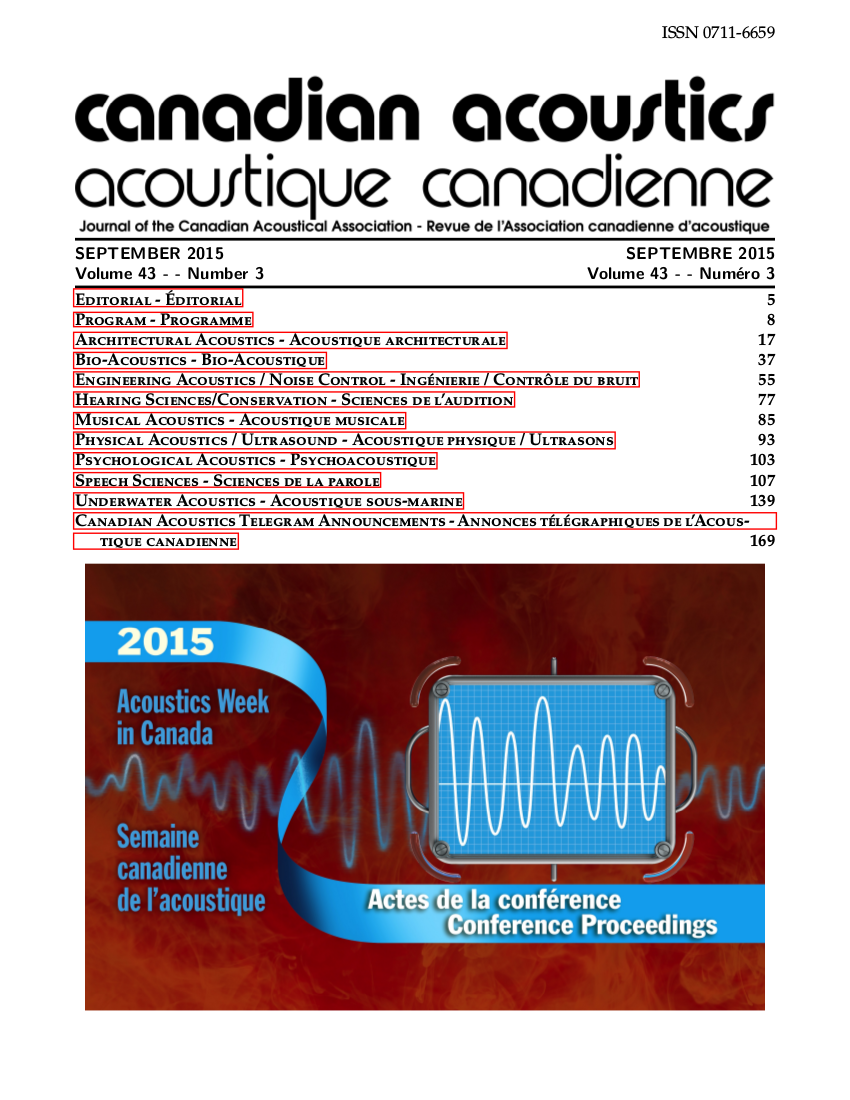Recording and reproducing speech airflow outside the mouth
Résumé
Creating a technique for artificially producing accurate time and intensity varying airflow can help us better understand the influence of airflow on speech perception. Such a technique would allow differentiation between airflow from stop release bursts, affricates, and fricatives. While customized high-speed short-burst airflow systems for testing somatosensory responses have been available since 1987 (Hashimoto, 1987; Mizobuchi, et al., 2000), the systems were difficult to obtain outside of Japan, so researchers studying the effects of airflow on speech perception began with solenoid operated on/off airflow devices (Gick & Derrick, 2009, Gick, et al., 2010). These systems were adequate to producing artificial airflow for aspirated stops such that correctly time-aligned airflow enhanced their perception in noisy environments. Recently, however, we created a custom airflow production system, called Aerotak. Aerotak itself relies on Murata's Microblower for airflow. The Microblower is a commercially available 20x20x1.85mm piezoelectric air pump with a maximum 0.8 l/m flow, 19.38 cm/h2o pressure, and an ability to change air-flow from 10% to 90% max cm/h20 in approximately 90 milliseconds. Aerotak allows researchers to produce artificial approximations of continuously varying airflow in speech (Derrick, et al. 2014a). We used Aerotak to demonstrate that airflow can enhance perception of English stops and fricatives (Derrick, et al. 2014b). We have also designed a custom mask-less airflow estimation system that allows accurate recordings of changes in turbulent speech airflow from the lips. In this presentation and paper, we will describe how to record airflow from speech, process the data for use with Aerotak, produce artificial speech airflow, and confirm the quality of the artificial production using our mask-less airflow system. Examples will include aspirated stops, fricatives and affricates from English speech.
Fichiers supplémentaires
Publié-e
Comment citer
Numéro
Rubrique
Licence
Author Licensing Addendum
This Licensing Addendum ("Addendum") is entered into between the undersigned Author(s) and Canadian Acoustics journal published by the Canadian Acoustical Association (hereinafter referred to as the "Publisher"). The Author(s) and the Publisher agree as follows:
-
Retained Rights: The Author(s) retain(s) the following rights:
- The right to reproduce, distribute, and publicly display the Work on the Author's personal website or the website of the Author's institution.
- The right to use the Work in the Author's teaching activities and presentations.
- The right to include the Work in a compilation for the Author's personal use, not for sale.
-
Grant of License: The Author(s) grant(s) to the Publisher a worldwide exclusive license to publish, reproduce, distribute, and display the Work in Canadian Acoustics and any other formats and media deemed appropriate by the Publisher.
-
Attribution: The Publisher agrees to include proper attribution to the Author(s) in all publications and reproductions of the Work.
-
No Conflict: This Addendum is intended to be in harmony with, and not in conflict with, the terms and conditions of the original agreement entered into between the Author(s) and the Publisher.
-
Copyright Clause: Copyright on articles is held by the Author(s). The corresponding Author has the right to grant on behalf of all Authors and does grant on behalf of all Authors, a worldwide exclusive license to the Publisher and its licensees in perpetuity, in all forms, formats, and media (whether known now or created in the future), including but not limited to the rights to publish, reproduce, distribute, display, store, translate, create adaptations, reprints, include within collections, and create summaries, extracts, and/or abstracts of the Contribution.


